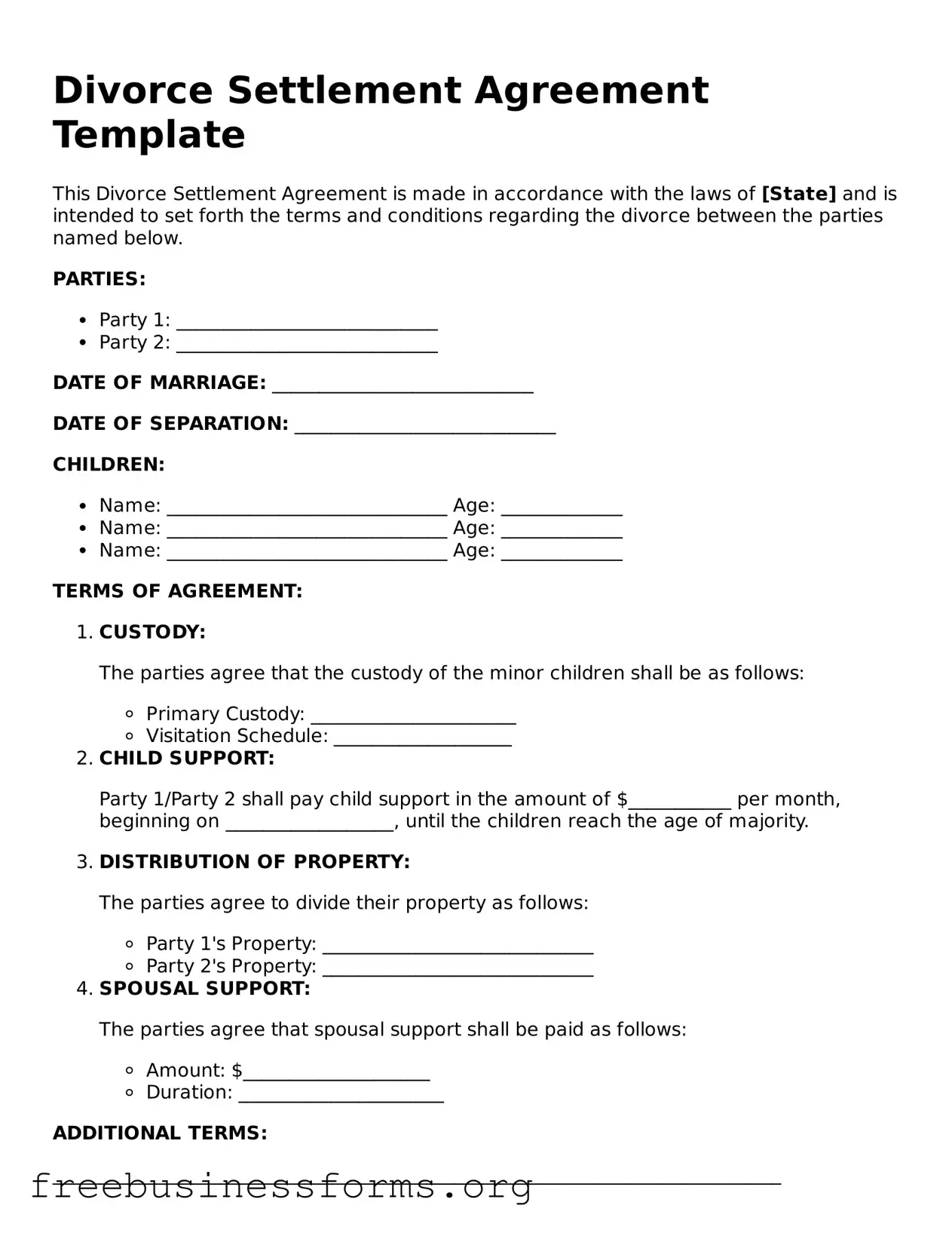Divorce Settlement Agreement Template
This Divorce Settlement Agreement is made in accordance with the laws of [State] and is intended to set forth the terms and conditions regarding the divorce between the parties named below.
PARTIES:
- Party 1: ____________________________
- Party 2: ____________________________
DATE OF MARRIAGE: ____________________________
DATE OF SEPARATION: ____________________________
CHILDREN:
- Name: ______________________________ Age: _____________
- Name: ______________________________ Age: _____________
- Name: ______________________________ Age: _____________
TERMS OF AGREEMENT:
- CUSTODY:
The parties agree that the custody of the minor children shall be as follows:
- Primary Custody: ______________________
- Visitation Schedule: ___________________
- CHILD SUPPORT:
Party 1/Party 2 shall pay child support in the amount of $___________ per month, beginning on __________________, until the children reach the age of majority.
- DISTRIBUTION OF PROPERTY:
The parties agree to divide their property as follows:
- Party 1's Property: _____________________________
- Party 2's Property: _____________________________
- SPOUSAL SUPPORT:
The parties agree that spousal support shall be paid as follows:
- Amount: $____________________
- Duration: ______________________
ADDITIONAL TERMS:
______________________________________________________________________________
______________________________________________________________________________
GOVERNING LAW: This agreement shall be governed by the laws of the State of [State].
IN WITNESS WHEREOF, the parties have executed this Divorce Settlement Agreement on the date indicated below:
_____________________________ _____________________________
Party 1 Signature Party 2 Signature
Date: ___________________________
